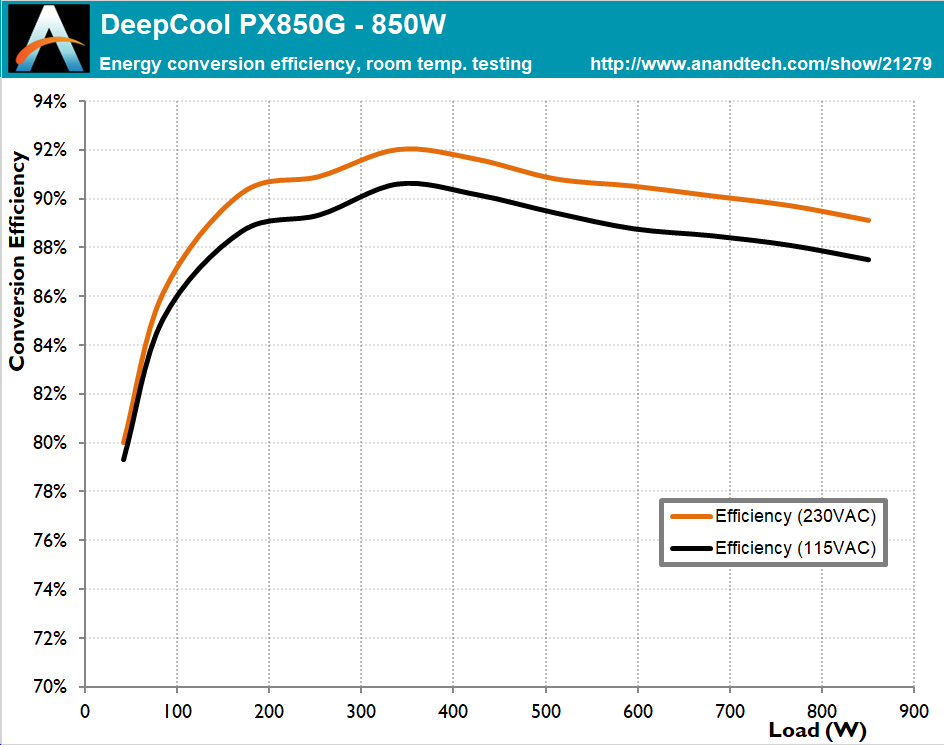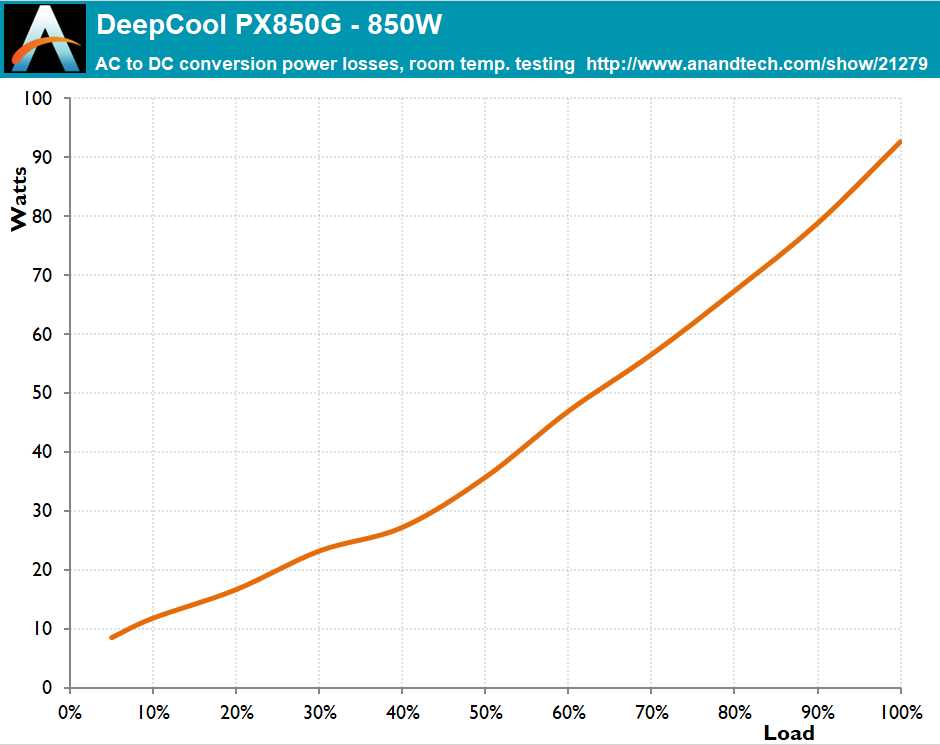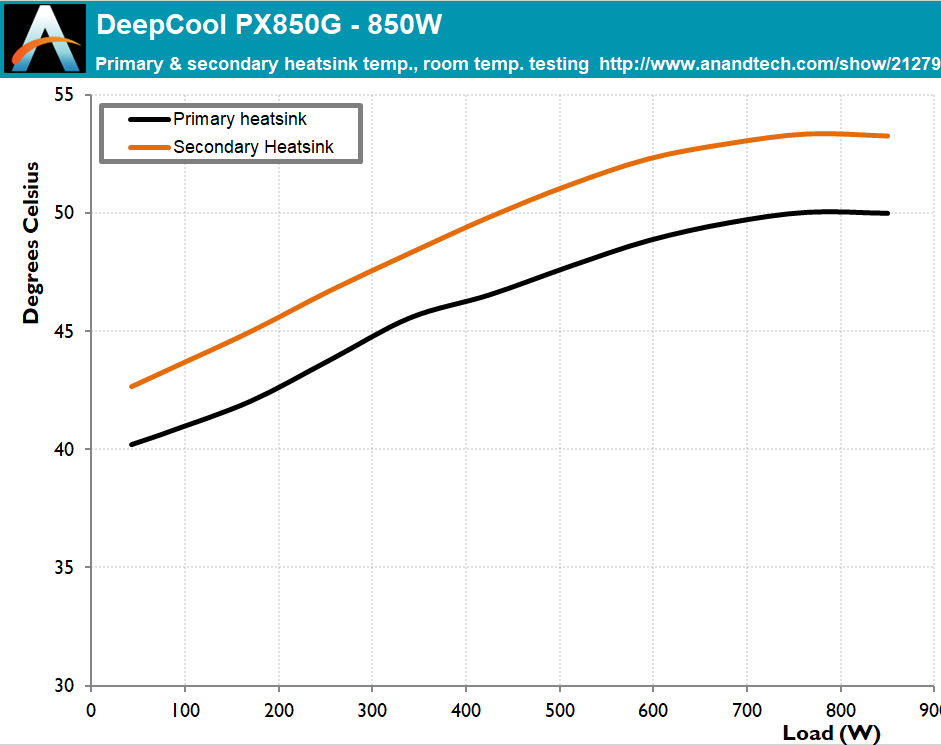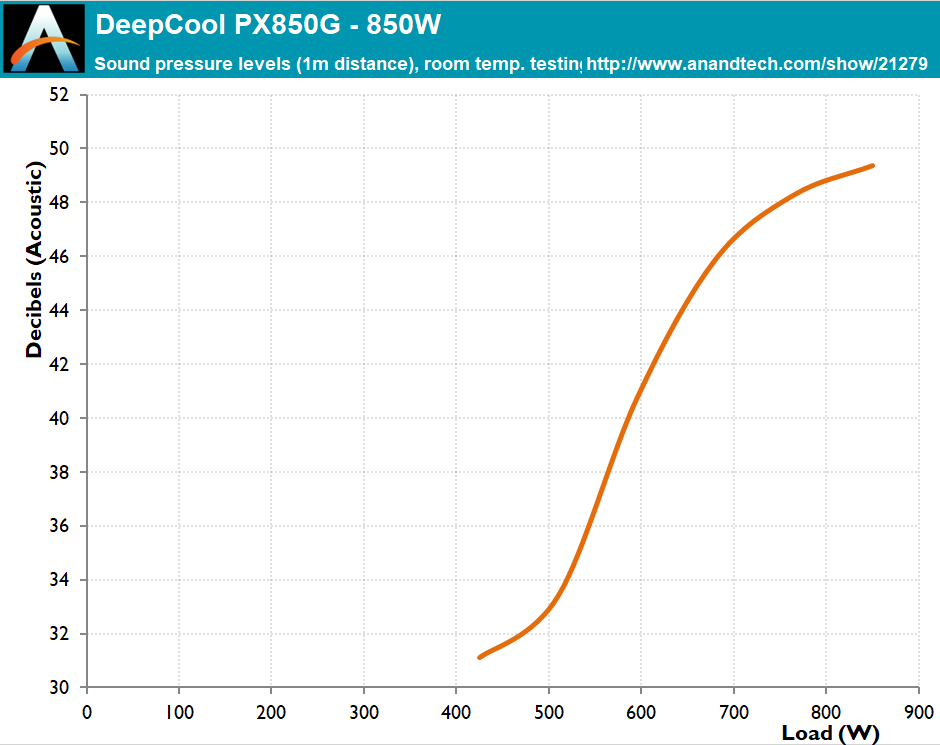The DeepCool PX850G 850W PSU Review: Less Than Quiet, More Than Capable
by E. Fylladitakis on March 26, 2024 9:00 AM EST- Posted in
- Cases/Cooling/PSUs
- PSUs
- Deepcool
- ATX v3.0
- 12VHPWR
Cold Test Results (~25°C Ambient Temperature)
For the testing of PSUs, we are using high precision electronic loads with a maximum power draw of 2700 Watts, a Rigol DS5042M 40 MHz oscilloscope, an Extech 380803 power analyzer, two high precision UNI-T UT-325 digital thermometers, an Extech HD600 SPL meter, a self-designed hotbox and various other bits and parts. For a thorough explanation of our testing methodology and more details on our equipment, please refer to our How We Test PSUs - 2014 Pipeline post.
The DeepCool PX850G 850W PSU meets the standards set by the 80Plus Gold certification, even if only barely. When operating with a 115 VAC input, the PSU displays an average nominal load efficiency of 89% across a range from 20% to 100% of its capacity, which increases to 90.5% with a 230 VAC input. The efficiency peaks at a load slightly less than half its maximum capacity. Low load efficiency is excellent, substantially better than that of most units with a similar power output.
The DeepCool PX850G 850W PSU features a "hybrid" fan mode, allowing the fan to remain inactive until required, which contributes to its quiet operation under low to medium loads. In ambient room temperature, the fan starts when the load surpasses 400 Watts. Once on, the fan accelerates aggressively as the load increases. Due to the aggressive fan profile at higher loads, the internal temperatures of the unit are maintained at relatively low levels, indicating that the design prioritizes reliability over acoustics.















6 Comments
View All Comments
GeoffreyA - Tuesday, March 26, 2024 - link
I haven't tried their power supplies, but the case I'm using is DeepCool's Tesseract. No complaints, and the fans have worked well for five years.Tunnah - Tuesday, March 26, 2024 - link
"..a significant decrease in efficiency, with figures dropping to 87.9% under a 115 VAC input and 89.5% with a 230 VAC source, compared to 89% and 90.5%, respectively.."1.1% and 1% is significant ? Doesn't that boil down to a difference of a few watts ?
PeachNCream - Tuesday, March 26, 2024 - link
When you're writing an article it can be difficult to think about things from an outside perspective. AT has noted via response to comments in the past that there isn't a review like one would find an editor performing before publication so they sometimes rely on readers pointing out things that could be improved and make edits after an article is out the door.I can't recall many Anandtech articles that haven't had suggestions from readers in the past probably six or so years. It shows the effectiveness of crowdsourced post-publication review to improve article quality and has been helpful so I believe feedback like yours is always beneficial when there isn't a team of professional writers and editors available.
And, to be fair, even well-known news sites are in a hurry and cost-sensitive so I see actual paid professional articles with the rare error or typo that slips out before publication. One or two errors per article isn't too bad considering Future doesn't have the same hiring power as an established, well-known company.
Samus - Wednesday, March 27, 2024 - link
Weird comment.Ryan Smith - Tuesday, March 26, 2024 - link
1% absolute is significant when you're talking about energy losses. Even though this is only a Gold PSU (a couple steps down from ultra-efficient Titanium), that's still an effective increase in energy losses of 10%.It's typical and expected for PSUs to lose efficiency in our hot box testing. We've had Gold PSUs fare better than this, though.
E.Fyll - Friday, March 29, 2024 - link
It does. However, that few Watts worth of difference merely due to the elevated temperature, from a technical point of view, is a major concern. The greater the difference, the more the active components are getting thermally stressed. Ideally, a great unit should have a very small difference in performance when the ambient temperature changes by ~20C, as long as the temperature remains under the unit's maximum rating.